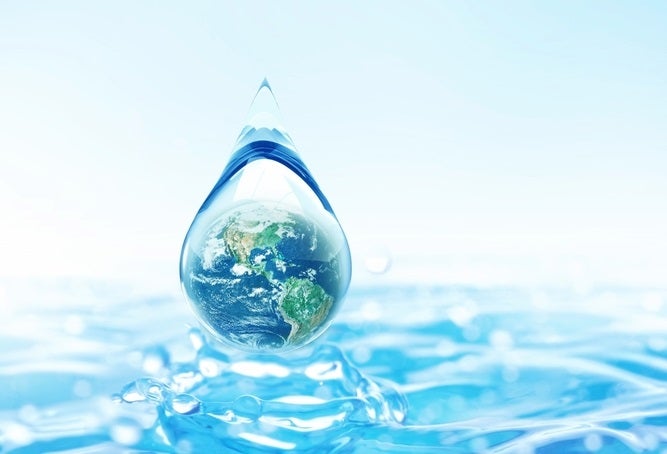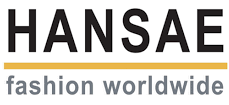
Water use in fashion production is a significant issue, as the industry is one of the most water-intensive industries in the world, with water being used at every stage of the fashion supply chain, from the production of raw fibres to dyeing and finishing textiles.
Indeed, according to the US Cotton Trust, the industry currently uses enough water to meet the basic needs of around five million people annually[i].
With the added pressures of climate change and an increasing population, the World Wildlife Fund reports that by 2030 nearly half the world’s population will live in areas of high water stress.[ii]
How can a high use industry like fashion address this growing problem?
How much water does fashion use?
Estimating overall water consumption by the manufacturing of fashion clothing is extremely difficult due to the many processes involved.
Growing raw fibres (such as cotton), washing, dyeing and finishing all add up.
However, figures from Common Objective[iii], estimate that the fashion industry currently uses around 93 billion cubic metres of water per year, which is four percent of all freshwater extraction globally.
And as well as water use, the fashion industry can also contribute to water pollution.
The dyeing of fabrics and the addition of properties such as wicking and waterproofing are done using traditional methods considered highly polluting. And the fashion industry also contributes to water pollution through the release of microfibres – tiny pieces of synthetic materials that shed from clothing during washing and end up in the water cycle.
Overproduction is also seen as a contributor. A larger volume of clothing being produced, leads to more water being used and more wastewater being generated.
Many fashion brands continue to ignore the root cause of the environmental issues they are causing, opting for cheaper materials with a shorter lifespan, making garments less durable.
However, there is hope on the horizon for our freshwater resources.
Thematic research by analytics firm GlobalData, including a survey on global ESG (Environmental, Social, and Governance) Strategy, shows that 82% of apparel companies say that ESG now has a role in their investment decisions[iv].
Reducing water use
The fashion industry is now recognising the need to reduce water consumption and is taking various measures to address the issue. Some brands are setting targets to reduce per-unit water usage by a certain percentage by a specific year. Others are working with factories to introduce water-saving technologies, such as using nanobubble and ozone cleaning to reduce water used in washing jeans. Many brands are also focusing on sourcing more sustainable materials that involve more efficient water use in their production.
However, many brands and retailers are unaware of the amount of water their garments are using and where to begin their reduction efforts.
South Korean-based garment manufacturer Hansae, whose clients include Target, Gap, Walmart, and Kohl’s, are stepping up their own efforts to make a difference.
Hansae has a widespread presence, exporting over 400 million pieces of clothing in 2021, and CEO and Vice Chairman, Daymond Ik-Whan Kim, says that the company is prioritising environmental sustainability.
“We believe we can influence and promote our supply chains to actively participate in environmental initiatives,” says Ik-Whan Kim, “to drive positive changes across the industry.”
This includes reducing water-use throughout the supply chain.
Water reduction initiatives
Hansae are actively lowering their water footprint, having set a target to lower total consumption by 20% by 2030. This is part of a suite of environmental policies for Hansae factories, which also have targets to maximise efficiencies and shift to renewable energy sources.
Hansae now operates three major water-saving projects at its C&T Vina vertical fabric mill in Vietnam, the manufacturer’s largest overseas production base. Hansae acquired C&T Vina in 2013 and established a textile company, Color & Touch, to complete its vertical integration from dyeing and processing to clothing manufacture.
The mill makes a complete range of printed and dyed fabrics and has implemented the trio of initiatives as part of its ongoing water-reduction target of 20% by 2030, as well as added interest by its customers and brands.
The three initiatives are:
- Dyeing machine water ratio upgrade: C&T Vina modified their dye machines by adjusting the angle of the machine’s structure, enabling it to improve the ratio of water required to dye fabric and reduce the total amount of water used. The system saved 181,256 cubic metres (m3) of water in 2022 and has already saved 211,829 m3 in 2023.
- Rainwater harvesting system: A rainwater harvesting system was installed to collect rainwater that was purified and then utilised for industrial and domestic use, saving 2,100 m3 in 2022, rising to 2,759 m3 in 2023.
- Wastewater pre-treatment and recycling system: In the most recent development, Hansae have installed a wastewater pre-treatment and recycling system that recycles wastewater for reuse. Daily capacity is 1,500 cubic metres per day, and the factory saved 149,689 m3 in 2022, and 183,017 m3 in 2023 so far.
This gives Hansae a total water saving of 333,045 m3 in 2022, increasing to 397,605 m3 in 2023.
Ik Whan Kim, says: “We believe these water-saving initiatives will play significant roles in helping brands to minimise the environmental impact of the apparel business.”
Leading the way on water reduction
Given increasing water scarcity and the need to reduce carbon emissions, reducing water usage in fashion production is essential.
Reducing water usage requires a comprehensive approach. This includes adopting new technologies and processes that use less water, and collaborating with stakeholders, including brands, to address water challenges and promote responsible water management.
It is critical for brands and manufacturers to demonstrate leadership by setting an example, and Hansae is doing just that.
For more information on how Hansae is making significant strides in sustainable fashion, download the free whitepaper below.
[i] https://www.just-style.com/comment/debunking-cotton-cultivation-as-a-water-intensive-practice/?cf-view
[ii] https://www.wwf.org.uk/what-we-do/protecting-our-rivers-lakes-and-freshwater#:~:text=Unsafe%20water%20has%20had%20severe,manage%20these%20spectacular%20freshwater%20environments.
[iii] https://www.commonobjective.co/article/the-issues-water#:~:text=It’s%20estimated%20that%20the%20fashion,of%20all%20freshwater%20extraction%20globally.
[iv] GlobalData: Thematic Research: ESG Strategy Survey 2021:
https://apparel.globaldata.com/Analysis/details/thematic-research-esg-strategy-survey-2021


